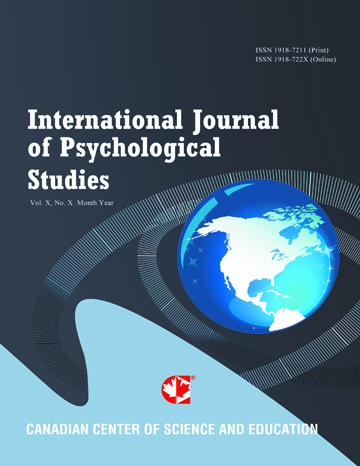Relationship between School Based Stress and Test Anxiety
- Jody Harpell
- Jac Andrews
Abstract
A total of 267 junior and senior high school students (grades 7,8,9,10,11,12; ages 12-19) with relatively moreinformants identifying as females (57.4%) compared to males (42.6%) and more junior high school students
(68.3%) than high school students (31.7%), responded to the German Test Anxiety Inventory (TAI-G) (Hoddapp
& Benson, 1997) and the School Situation Survey (SSS) (Holmes & Gable,1989). Pearson product moment
analyses yielded significant relationships between most of the TAI-G scales and SSS scales as well as between
the scales and sex, age, and grade level. Multiple linear regression analyses significantly identified Academic
Stress (p< .001) and Age (p< .05) as predicting Worry; Academic Stress (p< .001), Emotional Stress (p< .001),
and Physiological Stress (p< .001) predicting Emotionality; Peer Interaction (p< .01) and Academic Self-Concept
(p< .001) predicting Confidence; Academic Self-Concept (p<.001) and Behavioral Stress (p< .05) predicting
Interference; and Academic Stress (p< .001), Academic Self Concept (p< .001), Emotional Stress (p< .01),
Physiological Stress (p< .01), and Age (p< .01) predicting TA total score; thus supporting the use of the
Transactional Model of Stress and Coping as a general framework for understanding TA.
- Full Text:
 PDF
PDF
- DOI:10.5539/ijps.v5n2p74
Journal Metrics
1. Citations (March 2025): 10975
3. i10-index (March 2025): 233
For details about the Journal Metrics, please visit the Google Scholar website.
Index
- AcademicKeys
- CNKI Scholar
- Elektronische Zeitschriftenbibliothek (EZB)
- Excellence in Research for Australia (ERA)
- GETIT@YALE (Yale University Library)
- Harvard Library E-Journals
- JournalSeek
- JournalTOCs
- LOCKSS
- MIAR
- Open Access Journals Search Engine(OAJSE)
- Open J-Gate
- PKP Open Archives Harvester
- SHERPA/RoMEO
- Standard Periodical Directory
- The Keepers Registry
- UCR Library
- Ulrich's
- Universe Digital Library
- WorldCat
Contact
- Barbara SunEditorial Assistant
- ijps@ccsenet.org
